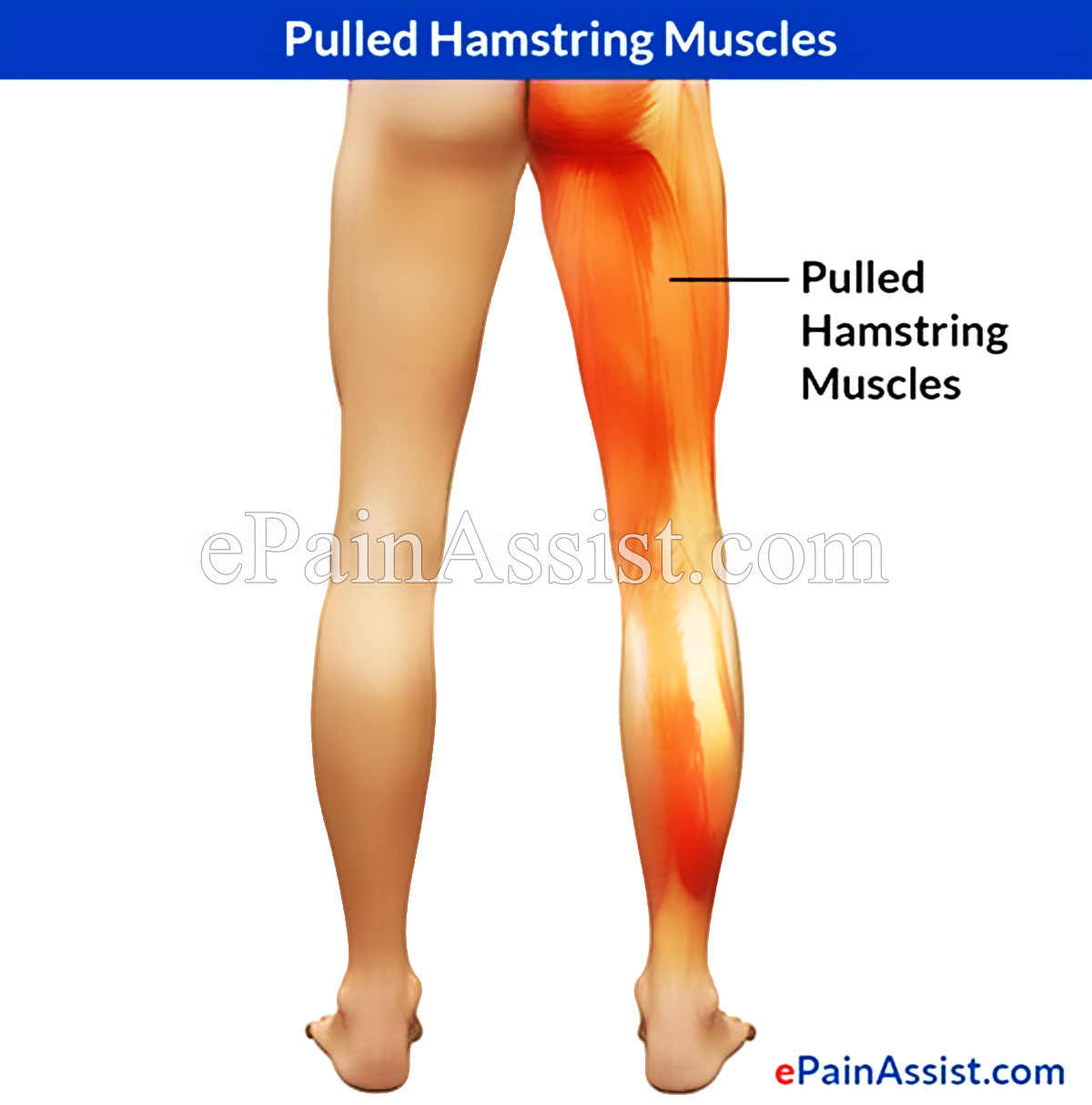A pulled hamstring muscle is a condition where there is strain to one or more of the hamstring muscles. The hamstrings are a group of tendons, which are contracted by 3 muscles, i.e. semitendinosus, semimembranosus and biceps femoris located in the posterior region of the thigh. The function of these muscles is bending or flexing the knee. A small part of the hamstring muscle also traverses the hip joint and helps with hip extension. The hamstring muscle is stabilized by the quadriceps muscles, which are located on the anterior part of the thigh and whose function is knee extension. Both these muscles, i.e. hamstrings and quadriceps, help in controlling the power and stability of the knee joint and permit activities such as walking, running, jumping, and squatting. Hamstring strain commonly occurs in the middle of the hamstring muscle; however, it can occur anywhere along the muscle tendon.

Causes and Risk Factors of Pulled Hamstring Muscles
A pulled hamstring muscle is a condition where there is strain to one or more of the hamstring muscles. The common cause of this is activities such as running, kicking, or sometimes walking down the steps. When a hamstring muscle is pulled or strained, the muscle fibers get stretched suddenly. Depending upon the severity or degree of the strain, the muscle may tear with an audible “pop.” Ageing process makes the tendon more prone to injury. In case of avulsion injury, there may be a small part of bone pulled away from the insertion point. Avulsion injuries commonly occur due to sudden muscle contraction such as when the athlete runs with a burst of speed or in other activities such as skiing, ice skating, and weightlifting. Other risk factors for pulled hamstrings are:
- Not warming up adequately before any workout or sports activities.
- Inadequate stretching before any workout or sports activities.
- Weakness of the muscle or imbalance in the hamstring muscles.
- An imbalance between the quadriceps and hamstrings.
- Ill-fitting footwear.
- Starting any physical activity soon after a previous strain before the muscle has had time to heal.
- Overuse injury.
Classification and Symptoms of Pulled Hamstring Muscles
Symptoms depend on the severity of the pulled hamstring injury. Strains are classified according to the damage to the muscle and tendon fibers.
- Grade 1 Strain: In this the muscle fibers are stretched, but are not torn. A grade 1 strain causes a slight pull or ache in the back of the thigh. There may be mild swelling. Pain worsens vigorous activities like running etc.
- Grade 2 Strain: There is a partial tear in some part of the muscle or tendon fibers. Acute and sharp pain is felt in grade 2 strains which may radiate up towards the buttock. Patient may experience difficulty in walking. Swelling and tenderness are present.
- Grade 3 Strain: This does not happen often and comprises of complete tear or rupture of the muscle or tendon. Symptoms of a grade 3 strain are a severe form of a grade 2 strain symptoms where the pain and swelling are more marked. Audible pop may be present upon muscle tearing. Bruising may be present at the site of injury.
Investigations for Pulled Hamstring Muscles
- History and physical examination.
- Past medical history.
- Range of motion of the hip and knee is tested, both with and without resistance.
- X-rays help in detecting avulsion fracture.
- Magnetic resonance imaging (MRI) helps in assessing the extent of injury to the muscle and tendon.
Treatment for Pulled Hamstring Muscles
- RICE therapy (rest, ice, compression, and elevation) is done initially.
- Rest is important for healing.
- Avoid weight-bearing activities.
- Crutches may be used for support.
- Icing can be done for 15 to 20 minutes at the site of injury and pain. Ice should never be placed directly on the skin, but should be wrapped in a towel to prevent frostbite.
- Ace wrap and taping can be beneficial.
- NSAIDs such as ibuprofen, naproxen help in controlling pain, inflammation and swelling.
- Grade 1 and 2 strains usually heal with the above mentioned conservative treatment.
- For grade 3 strains, surgery may be required to repair the tear to the muscle and tendon.
- Electrical stimulation therapy and muscle ultrasound helps in increasing blood circulation, which helps with the healing.
- Patients commonly recover from a hamstring strain in a few weeks, but if symptoms persist, then physical therapy is recommended.
